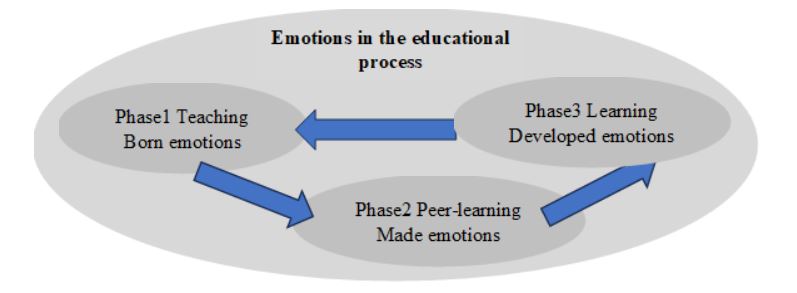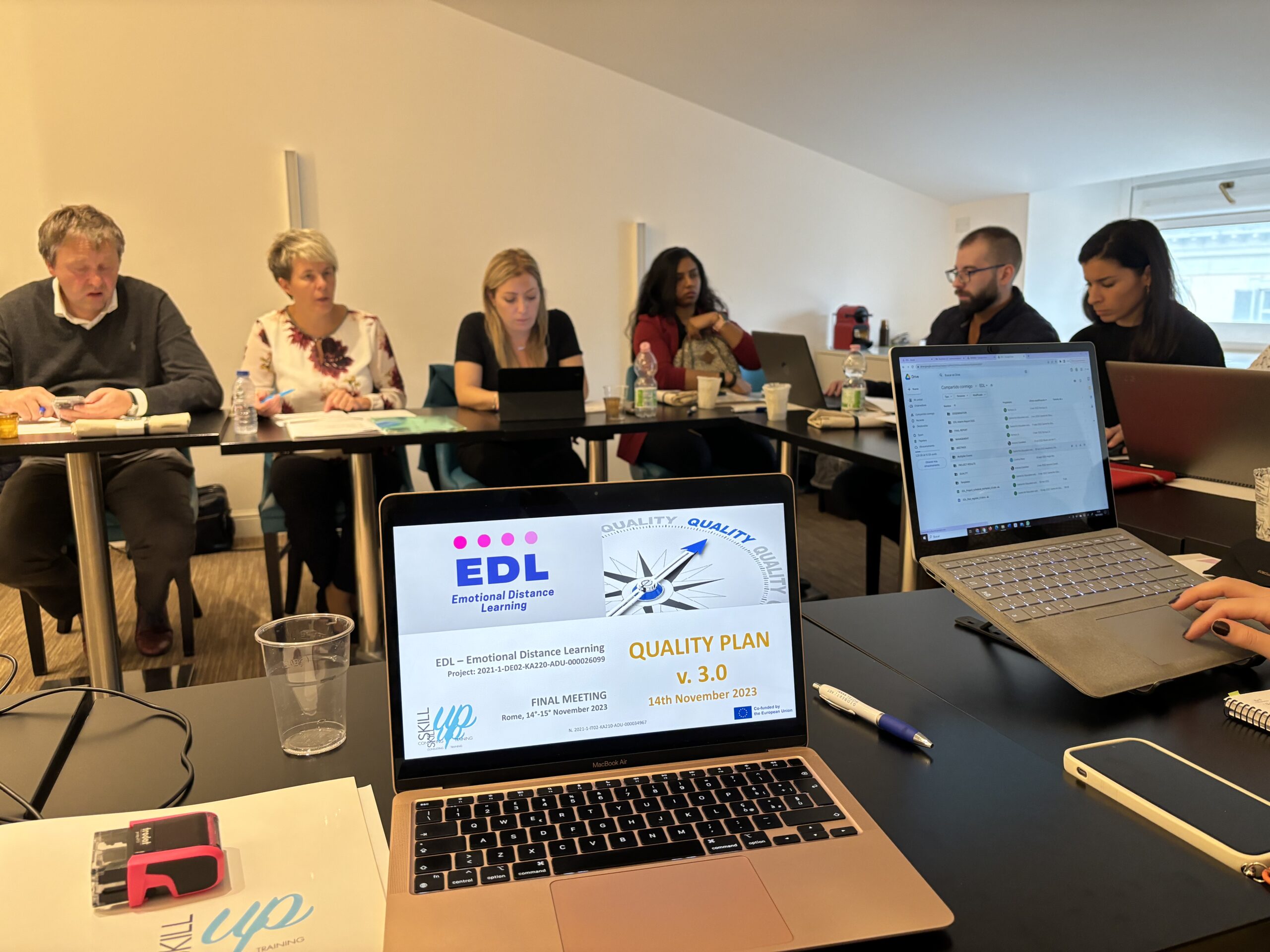By Jelena Zascerinska
Hochschule Wismar, Germany
In education, the paradigm of considering emotions is shifting
- from emotions as a factor that impacts the educational process
- to emotions as skills (OECD, 2019).
It means that the trend in relation to emotions in education is and will be the increased attention to emotions and their role in education.
For the success of the incorporation of emotions in education, the nature of emotions is important to be analysed.
Conventionally, emotions by their nature are divided into two groups:
- born and
- made, created, constructed, learned, and similar are used as synonyms (Ahrens, Zascerinska, Filimonova, Bikova, 2023).
However, when we speak about emotions in relation to education, we say “emotional development” and similar.
The research question is: are emotions born, made, or developed?
Our literature analysis allows identifying that emotions are studied in detail by many scientific disciplines:
- neuro-psychology,
- psychology,
- neuro-biology,
- sociology,
- physiology,
- management,
- axiology, and
- pedagogy.
This work deals with emotions from a pedagogical perspective.
Many scientists recognize that emotions are innate, meaning that we are born with them wired into our brains (Hegde, 2022). It should be noted that the brain is the structure, while the mind is considered a collection of its functions (Singh & Singh, 2011) as shown in Figure 1.

The brain carries out functions like thinking, emotions, problem-solving, sum total of a person’s personality including moral standards/judgments/reasoning etc, language/speech, hearing, vision, making sense of perceptions, and regulating motor activities, balance/coordination, heartbeat/respiration/other vital functions, hormonal and related balances (Singh & Singh, 2011). All these functions can be subsumed under a broad category of functions called Mind (Singh & Singh, 2011). The brain is the structure, Mind is a collection of its functions (Singh & Singh, 2011). Brain and Mind, though connected concepts are not synonyms (Singh & Singh, 2011). Like the eye is the structure, sight is its function (Singh & Singh, 2011). They should not be used interchangeably (Singh & Singh, 2011). The brain is the producer, mind its product (Singh & Singh, 2011). Without a brain, there is no mind (Singh & Singh, 2011). The mind is the product of brain activities (Singh & Singh, 2011). It is worth pointing out that consciousness is one of the functions of the mind (Singh & Singh, 2011). And, it is consciousness, then, that can guide or misguide us in our experiences (Singh & Singh, 2011). It is the brain and nervous system which run the rest of the body and all its activities, including thinking and action in all their forms, not the mind (Singh & Singh, 2011). The mind is just the sum total of all brain functions (Singh & Singh, 2011). It should be pointed out that pedagogy and education deal with the categories of mind and consciousness. As a result, emotions are born. In pedagogy and education, it means that any individual has emotional abilities (Ahrens & Zascerinska, 2023).
Today education is required to be obtained by all people. Education is defined by Vygotsky as the artificial development of the individual (Vygotsky, 1982-84, vol. 1, p. 107).
Stressing the term ”development” in Vygotsky’s definition of education, we can realize that emotions are developed. In education, emotions are linked to an individual’s cognition (Osika, MacMahon, Lodge, Carroll, 2022). We consider that an individual’s emotions are developed when an individual’s emotions become an integral part of this individual. Therefore, emotions can be developed.
Focusing on the term “artificial” in Vygotsky’s definition of education, we can link “artificial” with art (theatre, films, paintings, etc). Art is conventionally based on the game “make-believe” (Dos Santos, 2017). The individual’s experience in the game “make-believe” is called “what‐it‐is‐like‐ness” and is defined as “second-order” beliefs or quasi-emotions (Dos Santos, 2017). In the educational context, quasi-emotions mean asymmetrical emotions, in flux at various stages, that can be interpreted differently at different points in time (Ahrens, Zascerinska, Filimonova, Bikova, 2023). It means that in a class, a learner might show or pretend a task implementation. But if the task is not truly carried out by this learner, his/her emotions are made for demonstrating them to the teacher and his/her classmates only. Here, emotions can be made.
We can conclude that an individual’s emotions are the combination of born, made, and developed emotions. Moreover, following the cycle of the educational process described by Zaščerinska, Zaščerinskis, Andreeva, and Aļeksejeva (2013), Figure 2 reflects how born, made, and developed emotions are logically and sequentially linked to the phases of the educational process:
- teaching in Phase 1 deals with the “born” emotions,
- peer-learning in Phase 2 engages the “made” emotions, and
- learning in Phase 3 copes with the “developed” emotions.

Based on our analysis we can conclude that emotions are a combination of born, made and developed emotions. Moreover, the enrichment of emotions sequentially proceeds from born emotions in teaching through made emotions in peer-learning to developed emotions in learning.
References:
Ahrens, A., Zascerinska, J. (2023). Teachers’ Emotional Experience in Online Classes in Adult Education in Selected European Countries. World Academy of Science, Engineering and Technology International Journal of Educational and Pedagogical Sciences Vol:17, No:3, 2023. International Scholarly and Scientific Research & Innovation 17(3) 2023, pp. 154-159. ISNI:0000000091950263. publications.waset.org/10013012/pdf.
Ahrens, A., Zascerinska, J., Filimonova, D., Bikova, A. (2023). How Emotions Are Developed: Insights From Vygotsky’S and Leontiev’s Works. SOCIETY. INTEGRATION. EDUCATION. Proceedings of the International Scientific Conference. Volume II, May 26th, 2023. 232-242. https://doi.org/10.17770/sie2023vol2.7116 . http://journals.rta.lv/index.php/SIE/article/view/7116/6138
Dos Santos, M. (2017). Walton’s Quasi-Emotions Do Not Go Away, The Journal of Aesthetics and Art Criticism, Volume 75, Issue 3, August 2017, Pages 265–274, https://doi.org/10.1111/jaac.12385
Hegde, Sushmitha. (2022). Are We Born With Emotions Or Do We Learn Them Later? Updated On: 8 Jul 2022. Available at: https://www.scienceabc.com/social-science/are-we-born-with-emotions-or-do-we-learn-them-later-evolution-social-construct.html
OECD (Organisation for Economic Cooperation and Development). (2019). Future of Education and Skills 203. Conceptual learning framework. Concept note: Skills for 2030. OECD https://www.oecd.org/education/2030-project/teaching-and-learning/learning/skills/Skills_for_2030.pdf
Osika, A., MacMahon, S., Lodge, J.M., Carroll, A. (2022). Emotions and learning: what role do emotions play in how and why students learn? Available at https://www.timeshighereducation.com/campus/emotions-and-learning-what-role-do-emotions-play-how-and-why-students-learn#
Singh AR, Singh SA. (2011). Brain-mind dyad, human experience, the consciousness tetrad and lattice of mental operations: and further, the need to integrate knowledge from diverse disciplines. Mens Sana Monogr. 2011 Jan;9(1):6-41. doi: 10.4103/0973-1229.77412. PMID: 21694960; PMCID: PMC3115304.
Vygorsky, L. (1982-84). Sobranie so_inenii [Complete Works], Vols. I-VI. Moscow, Pedagogika.
Zaščerinska, J., Zaščerinskis, M., Andreeva, N., Aļeksejeva, L. (2013). Factors that Influence the Educational process. International Journal of Modern Education Forum (IJMEF) Volume 2, Issue 3 (August 2013), pp. 57-65. Print ISSN 2324-6928, online ISSN 2324-6944. http://www.ijmef.org/AllIssues.aspx.



0 Comments